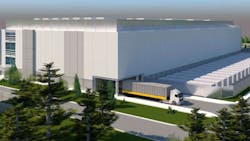Northern Virginia's Fairfax County Tightens Data Center Rules
After months of discussion featuring lengthy and contentious debate, Fairfax County in Northern Virginia this week passed a new zoning ordinance to tighten its guidelines for data center development.
As approved by the county's Board of Supervisors, the revised ordinance imposes strict regulations on data center development in Fairfax County.
Key changes in the new zoning ordinance for data centers in Fairfax County include new requirements for:
- Equipment Enclosure: Data center quipment must be enclosed or screened by a wall or barrier to reduce visual and noise impacts.
- Residential Setback: Data centers must be at least 200 feet from the lot line of an adjacent residential district or property. Equipment such as back-up generators must be 300 feet from the lot line.
- Distance from Metro: Data centers must be at least one mile from a Metro station.
- Noise Studies: Pre- and post-construction noise studies must be submitted to ensure compliance with the Noise Ordinance.
- Building Design: Façade and archictectural improvements are required to enhance the visual appeal of the buildings.
The revised ordinance also specifies new limits on the size of projects, depending on location.
Existing facilities built or approved before July 2024 are not subject to the new rules.
According to county staff as reported by Inside NoVA, there are currently six data center applications that have been accepted by the county for review but not yet approved.
Of those six applications, one reportedly wouldn’t meet the proposed 1-mile setback requirement from a Metro station. Another would require a special exception or redesign due to its proximity to residential areas.
Comparing Virginia's Major Data Center Zones
While Fairfax County has about 3 million square feet (SF) of data centers, nearby Loudoun County, home of Ashburn's Data Center Alley, the largest data center market globally, has more than 30 million SF.
Meanwhile, an analysis by the Prince William Times found nearby Prince William County, home of the contentious PW Digital Gateway, which also came in for rezoning after a marathon public hearing last December, found that Prince William will overtake Loudoun County in data center development and go well beyond those numbers, should all plans come to fruition.
According to the analysis, Prince William County has at least 44 data center buildings totaling 8.3 million square feet. However, adding what’s under construction, already approved or otherwise underway, Prince William County could end up with more than 80 million square feet of data center space.
The new regulations in Fairfax County, which were passed after a roughly four-hour-long public hearing, came after Fairfax residents testified about both their oppositions and enthusiasms for data centers.
As reported by DC News Now, Fairfax County Chair Jeff McKay said before the 8-to-2 vote on the ordinance, “We want to put in place protections for data centers in Fairfax County and not repeat the challenges that have been faced in neighboring Prince William and Loudoun counties.”
To the south of the state, Virginia's Culpeper Tech Zone has put community protections in place in advance to encourage data center development while heading off the NIMBY mindset.
Way back in January of this year, the Fairfax County Board of Supervisors began by considering a proposal to rezone several acres near Chantilly Auto Park to build a three-story data center constructed by an affiliate of developer Penzance.
FFX Now reported the project raised strong opposition from several local stakeholder groups. The Chantilly data center plan was approved in July.
About the Author
Matt Vincent
A B2B technology journalist and editor with more than two decades of experience, Matt Vincent is Editor in Chief of Data Center Frontier.



